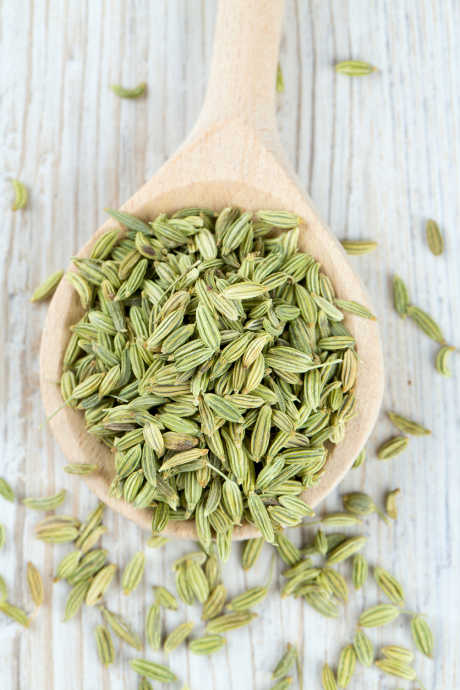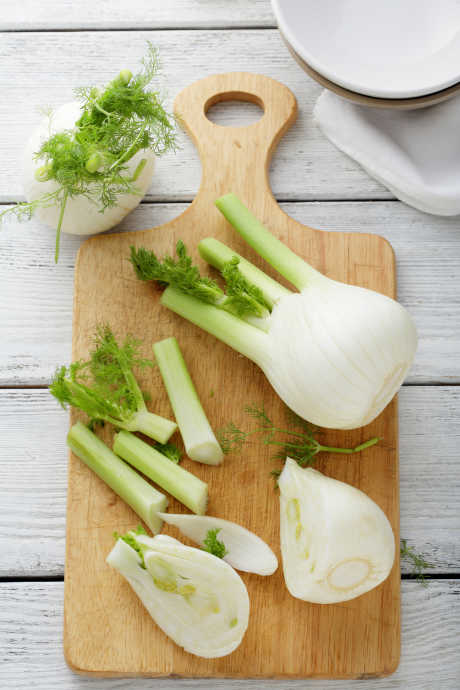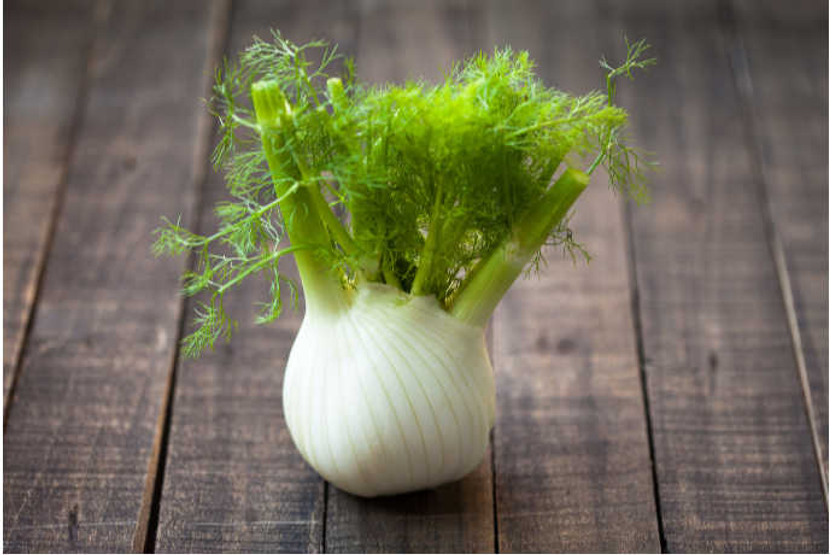5 Ways to Prepare Fresh Fennel
Posted by Julie on Jul 15th 2020
We’re always on the lookout for ways to incorporate more fresh produce into our meals. Fennel is one item that may not have made it onto your shopping list yet, but you might consider it for your next trip. You can eat it cooked or raw, and it’s available all year long. Keep reading to learn more about fennel and how to prepare it.
Fennel vs. Anise
Before we dive into the details of fennel, we want to draw the distinction between fennel and anise. You may have heard the seeds from these two types of plants both taste like licorice. While they are both part of the carrot family, known as umbellifers, they are entirely different plants. Plus, all of the fennel plant is edible, whereas only the seeds of the anise plant are eaten.

You can use fennel seeds in place of anise seeds, and vice versa, but anise has a stronger flavor than fennel. Consider increasing or decreasing the amount of seeds you use depending on how you are substituting them. If you’re especially sensitive to licorice flavor, you may even find raw fennel to be too pungent for your tastes. To tone down the flavor, Chowhound suggests slicing or chopping fennel and soaking it in water for half an hour.
What Is Fennel?
Fennel is a perennial herb that consists of a bulb, stalks, and fronds. As we mentioned in the previous section, fennel seeds are also edible. Fennel is eaten in various types of cuisine all over the world, across Europe and throughout Asia, though it’s native to the Mediterranean. Not surprisingly, fennel is packed with fiber and nutrients, including vitamins A, C, and B6, plus potassium and calcium.
Choose, Prep, and Store Fennel
While fennel is in season during the fall and winter months, you can find it all year long. A few key characteristics of fresh fennel to look for include: firm bulbs without brown spots or blemishes, bright green stalks and fronds, and no wrinkling or shriveling of the outer layers. The bulb is the primary part of fennel that’s typically eaten, but save the stalks for adding to homemade stock. You can also use them as a bed for roasting chicken or pork, both to impart flavor and prevent scorching. The fronds make a perfect garnish, or you can toss them into salad.

If you aren’t going to use it right away, store fennel in the refrigerator. The Spruce Eats recommends chopping the stalks off the bulb before storing, but use them both within a few days. When you’re ready, slice off the root end of the fennel bulb and peel away the outermost layer. Then remove the core, which is too tough for eating. You can dice the bulb into small chunks, or use a mandoline to create thin slices.
Raw fennel is crunchy like celery, with a fresh vegetal taste that can be reminiscent of licorice. Cooked fennel has a sweeter, more mellow flavor and soft texture. You can also pickle fennel, like carrots and cucumbers.
Fennel Recipes
Now that you know what fennel is all about and how to pick a fresh bulb, let’s discuss how to use fennel bulbs, stalks, and fronds in five delicious recipes.
Appetizer: Avocado Toast With Fennel
For a simple yet elegant appetizer, try this recipe from Serious Eats. It calls for plain sandwich bread, but we’d use French, Italian, baguettes, or even toasted pita bread. Brush each slice with olive oil and toast it, then spread mashed avocado over the top. Top with raw fennel, thinly sliced with a mandoline. Remove the membranes from sections of citrus -- oranges, grapefruits, or clementines will work -- and set them on top of the fennel slices. Finally, add salt and pepper to taste.
Salad: Fennel Apple Salad With Walnuts
Fennel is the star of the show in this recipe from the New York Times. Get out your mandoline again, and slice three fennel bulbs, plus two Granny Smith apples and three stalks of celery. Toss all of these ingredients with lemon vinaigrette, seasoned with salt and pepper. Add toasted walnuts and fennel fronds to your salad, and top it with shaved parmesan. This crunchy, tart salad makes a refreshing start to a summer dinner.

Pasta: Orecchiette With Caramelized Fennel and Spicy Sausage
What we love about this recipe from The Kitchn is how deceptively simple it is. Brown the sausage in a skillet, then transfer it to another plate. Caramelized thinly sliced fennel in the same skillet, cooking it low and slow for about 20 minutes. At the same time, boil water for the orecchiette and cook until it’s al dente. Save some of the pasta water -- we’ve explained before how helpful pasta water can be -- and add it to the skillet, along with the cooked orecchiette, sausage, and fennel. Stir the contents over low heat until the pasta is coated with sauce and everything is heated through. Serve with parmesan cheese and fennel fronds as a garnish. This dish looks like a lot more work than it actually is.
Side Dish: Cornbread Dressing With Sausage and Fennel
Bookmark this recipe from Bon Appetit for Thanksgiving, or make it to accompany a roast chicken or pheasant. We won’t dive into the step-by-step instructions for this recipe, but just the list of ingredients may be enough to convince you it’s worth trying: cubed cornbread, sausage, fennel, celery, scallions, garlic, diced pears, dry white wine, and a whole host of herbs. Unlike the pasta recipe above, this one will take more effort, but the results look like they’re worth it.
Drink: Cucumber Fennel Fizz
This recipe from Food52 can be made with or without alcohol. Either way, it’s a refreshing before-dinner drink that’s perfect for summer. Blend an English cucumber (the seedless variety) with fennel, lime juice, apple cider vinegar, and ice. Divide the blended mixture between two glasses, and then add club soda, ginger ale, or sparkling water. You can add frozen fruit to each glass as a garnish, along with fennel fronds. If you’d like to make these alcoholic, stir an ounce of gin into each one. Otherwise, enjoy them as-is.

